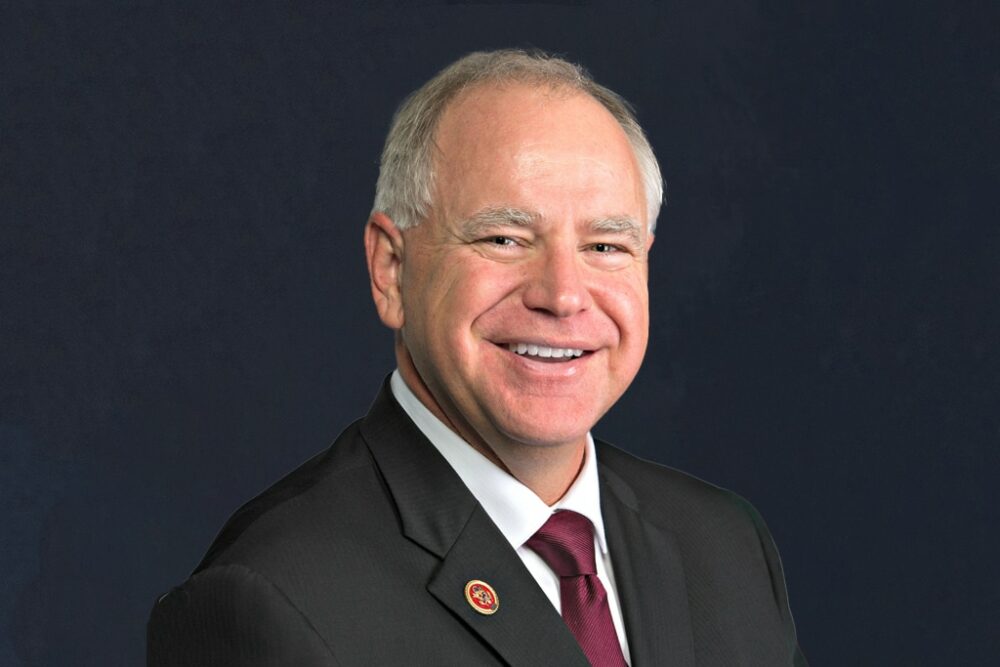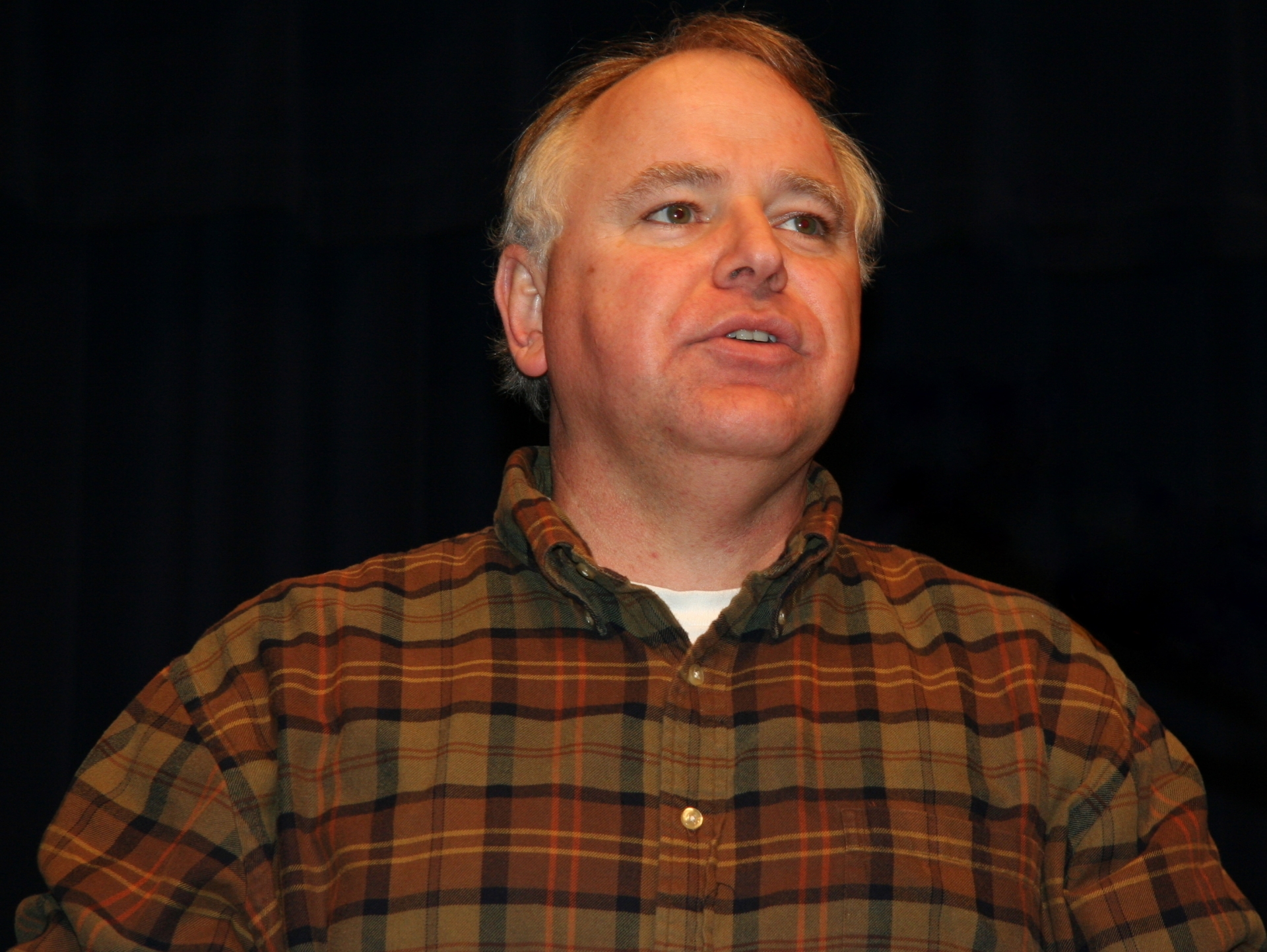Tim Walz

Tim Walz, the current Governor of Minnesota, is a prominent figure in American politics. His journey, from a teacher to the highest office in the state, reflects his dedication to public service and his commitment to progressive values.
Early Life and Education
Tim Walz was born in 1964 in West Fargo, North Dakota. His upbringing was grounded in the values of hard work and community involvement. He attended North Dakota State University, where he earned a bachelor’s degree in political science and history. After graduating, he pursued a career in education, serving as a social studies teacher and later as a history teacher at a high school in Mankato, Minnesota.
Political Journey
Walz’s political career began in 2006 when he was elected to the United States House of Representatives, representing Minnesota’s 1st congressional district. During his time in Congress, he served on the House Education and Labor Committee, focusing on issues related to education, workforce development, and veterans’ affairs. He gained recognition for his bipartisan approach to legislation and his willingness to work across the aisle.
Political Ideology and Key Policy Positions
Walz identifies as a progressive Democrat. His political ideology is rooted in a belief in the power of government to address social and economic inequalities. He supports policies that promote social justice, economic opportunity, and environmental protection. Some of his key policy positions include:
- Expanding access to affordable healthcare
- Investing in public education
- Protecting the environment and combating climate change
- Supporting working families and raising the minimum wage
Leadership Style and Effectiveness
Tim Walz is known for his collaborative leadership style. He emphasizes the importance of listening to diverse perspectives and working together to find common ground. As Governor, he has faced a number of challenges, including the COVID-19 pandemic and economic uncertainty. His leadership during these difficult times has been marked by his commitment to transparency, his willingness to make tough decisions, and his focus on the well-being of Minnesotans.
Tim Walz’s Accomplishments and Challenges as Governor

Tim Walz, the 41st Governor of Minnesota, has navigated a complex political landscape marked by both triumphs and trials. His tenure has been shaped by a blend of legislative achievements, economic fluctuations, and social tensions, offering a multifaceted view of leadership in a rapidly changing state.
Legislative Successes and Initiatives
Governor Walz’s legislative record reflects a commitment to addressing key issues facing Minnesotans. Notable successes include:
- The passage of a significant infrastructure bill, investing in roads, bridges, and public transit, aimed at boosting economic growth and improving transportation networks.
- The implementation of a comprehensive education reform package, focusing on increased funding for schools, teacher training, and early childhood education, aimed at improving educational outcomes for all Minnesotan children.
- The enactment of a major healthcare expansion, expanding access to affordable healthcare and addressing health disparities, aimed at ensuring a healthier and more equitable Minnesota.
Economic Challenges and Growth
Minnesota’s economy has faced a mix of challenges and growth during Walz’s governorship.
- The COVID-19 pandemic significantly impacted the state’s economy, leading to business closures, job losses, and a decline in economic activity. However, Walz’s administration implemented measures to support businesses and workers, including unemployment benefits and loan programs.
- Despite the pandemic’s impact, Minnesota’s economy has shown signs of resilience, with unemployment rates gradually decreasing and some sectors experiencing growth. The state’s diverse economy, anchored by industries like healthcare, technology, and agriculture, has contributed to this resilience.
- The state’s economic outlook remains optimistic, with projections indicating continued growth in key sectors, driven by investments in infrastructure, education, and innovation.
Social Unrest and Polarization
Governor Walz’s tenure has been marked by periods of social unrest and political polarization.
- The murder of George Floyd in 2020 sparked widespread protests and unrest across Minnesota, highlighting deep-seated racial inequities and systemic issues. Walz responded by calling for police reform and racial justice, emphasizing the need for a more just and equitable society.
- Political polarization has intensified in recent years, with sharp divisions on issues such as healthcare, education, and climate change. Walz has sought to bridge these divides, emphasizing common ground and the need for collaborative solutions.
- The state has seen a rise in political activism, with citizens engaging in grassroots movements and advocacy on a range of issues. Walz has acknowledged the importance of citizen engagement and the need for government to be responsive to the needs and concerns of the people.
Comparisons with Previous Governors
Tim Walz’s approach to governance can be compared and contrasted with that of previous Minnesota governors.
- Similar to his predecessor, Mark Dayton, Walz has prioritized investments in education and healthcare, recognizing their importance for the state’s future. However, Walz’s focus on economic growth and job creation distinguishes his approach from Dayton’s, who placed a greater emphasis on social justice and environmental protection.
- Compared to Jesse Ventura, Walz has adopted a more traditional approach to governing, focusing on bipartisan collaboration and consensus-building. Ventura, known for his independent and unconventional style, often clashed with the legislature and pursued a more populist agenda.
- Walz’s approach to handling crises, such as the COVID-19 pandemic, has been characterized by a more cautious and data-driven approach compared to some of his predecessors. This approach, while not without criticism, has been credited with mitigating the impact of the pandemic and protecting public health.
Timeline of Key Events and Decisions
Governor Walz’s tenure has been marked by a series of key events and decisions that have shaped the state’s trajectory.
- 2019: Walz took office, vowing to address issues such as education, healthcare, and economic growth. He signed into law a major infrastructure bill, investing in roads, bridges, and public transit.
- 2020: The COVID-19 pandemic struck Minnesota, leading to widespread economic disruption and public health concerns. Walz implemented a series of emergency measures, including stay-at-home orders and business closures, to mitigate the spread of the virus.
- 2020: The murder of George Floyd in Minneapolis sparked widespread protests and unrest, highlighting racial injustice and systemic issues. Walz called for police reform and racial justice, emphasizing the need for a more equitable society.
- 2021: Walz signed into law a comprehensive education reform package, increasing funding for schools, teacher training, and early childhood education. He also signed a bill expanding access to affordable healthcare.
- 2022: Walz faced re-election, campaigning on a platform of economic growth, education reform, and addressing climate change. He was re-elected, securing a second term as governor.
Tim Walz’s Impact on Minnesota and its People: Tim Walz Minnesota

Governor Tim Walz’s policies have had a significant impact on various sectors of Minnesota’s economy and its people, shaping the state’s landscape in areas like agriculture, manufacturing, healthcare, and education. His leadership has also been instrumental in addressing critical social issues, including healthcare, education, environmental protection, and racial equality.
Impact on Minnesota’s Economy
The economic impact of Tim Walz’s policies can be seen across various sectors, with both positive and negative effects.
- Agriculture: Walz’s policies have aimed to support Minnesota’s agricultural industry, a significant contributor to the state’s economy. These policies include initiatives to promote sustainable farming practices, expand access to markets, and address issues related to climate change. However, some argue that these initiatives have not gone far enough to address the challenges faced by farmers, particularly in terms of commodity prices and market volatility.
- Manufacturing: Minnesota’s manufacturing sector has been a cornerstone of its economy, and Walz has focused on supporting this sector through initiatives such as promoting workforce development programs and fostering innovation. However, challenges remain in terms of attracting new investment and retaining existing manufacturing jobs in the face of global competition.
- Healthcare: Walz’s administration has expanded access to healthcare, particularly for low-income Minnesotans, through programs such as the MinnesotaCare program. However, concerns remain regarding the sustainability of these programs and the rising costs of healthcare in the state.
- Education: Walz has prioritized education by increasing funding for public schools and promoting early childhood education. However, some argue that these efforts have not been sufficient to address the challenges faced by Minnesota’s education system, such as teacher shortages and inequities in access to quality education.
Impact on Social Issues
Tim Walz’s leadership has had a notable influence on addressing social issues in Minnesota.
- Healthcare: Walz’s administration has expanded access to healthcare for low-income Minnesotans through programs like MinnesotaCare. However, challenges remain in addressing the affordability of healthcare, particularly for middle-class families.
- Education: Walz has increased funding for public schools and promoted early childhood education, aiming to improve educational outcomes for all Minnesota students. However, concerns remain about the adequacy of funding and the need for further investment in teacher training and support.
- Environmental Protection: Walz has emphasized environmental protection through initiatives to combat climate change, promote clean energy, and protect natural resources. However, critics argue that these efforts have not been sufficiently ambitious and that more needs to be done to address the state’s environmental challenges.
- Racial Equality: Walz has acknowledged the systemic racism that exists in Minnesota and has implemented initiatives to address racial disparities in areas such as education, healthcare, and criminal justice. However, critics argue that these efforts have not gone far enough to dismantle systemic racism and achieve true racial equality.
Demographic Impact of Tim Walz’s Policies, Tim walz minnesota
The following table Artikels the key demographics of Minnesota and how Tim Walz’s policies have impacted different groups within the state:
| Demographic Group | Key Impact of Tim Walz’s Policies |
|---|---|
| Rural Minnesotans | Walz’s policies have focused on supporting agriculture, a key sector in rural Minnesota. However, some argue that these efforts have not gone far enough to address the challenges faced by rural communities, such as economic decline and population loss. |
| Urban Minnesotans | Walz’s policies have addressed issues facing urban areas, such as affordable housing, transportation, and access to healthcare. However, some argue that these efforts have not been sufficient to address the challenges of poverty and inequality in Minnesota’s cities. |
| Minnesotans of Color | Walz has acknowledged the systemic racism that exists in Minnesota and has implemented initiatives to address racial disparities in areas such as education, healthcare, and criminal justice. However, critics argue that these efforts have not gone far enough to dismantle systemic racism and achieve true racial equality. |
| Minnesotans with Disabilities | Walz’s policies have aimed to improve access to services and opportunities for Minnesotans with disabilities. However, some argue that more needs to be done to address the challenges faced by this group, such as employment discrimination and inadequate support services. |
| LGBTQ+ Minnesotans | Walz has been a vocal advocate for LGBTQ+ rights and has signed legislation protecting LGBTQ+ Minnesotans from discrimination. However, some argue that more needs to be done to address the challenges faced by this group, such as access to healthcare and housing. |
Visual Representation of Tim Walz’s Impact on Minnesota
A visual representation of Tim Walz’s impact on Minnesota could be a chart or infographic depicting the positive and negative impacts of his governorship on the state’s overall well-being. The chart could include data points on key indicators such as economic growth, unemployment rate, poverty rate, healthcare access, education attainment, environmental quality, and racial equity. The chart could also show the relative impact of Walz’s policies on different demographic groups within the state. This visual representation would provide a comprehensive overview of the complex and multifaceted impact of Tim Walz’s leadership on Minnesota and its people.
